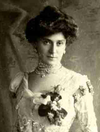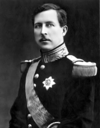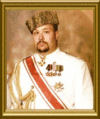Monarchy of Victoria
The monarchy of Victoria was established in 1450 AN upon the ratification of the Declaration of Alnwick to establish the former state of the Kingdom of Victoria, becoming the nation's constitutional form of hereditary governance. It has since evolved to cover the head of state of the subsequent Victorian Empire, while periods of protection underneath the fellow monarchies of Gotzborg and Stormark have seen its lineage change. The current monarchy is shared with that of Craitland, following the re-establishment of the line of Brown in 1702 AN.
List of Victorian monarchs
House of Brown
The House of Brown became the ruling family of the Kingdom of Victoria with the Declaration of Alnwick, which founded the unified Victorian state by aligning the five petty kingdoms of Abberdyffryn, Ardaks, Dundahl, Moncrieff and Strathalmond.
| Name Reign |
Portrait | Birth Date, location |
Death | Age |
|---|---|---|---|---|
| Victoria I 17.IV.1450 – 30.X.1481 |

|
9.VI.1430 Balmoral Castle, Scotannia |
30.X.1481 St. Andrews Palace, Riego |
51 |
| Edward I 30.X.1481 – 7.VIII.1499 |

|
28.VI.1451 St. Andrews Palace, Riego |
7.VIII.1499 Strathalmond Castle, Strathalmond |
48 |
| James I 7.VIII.1499 – 16.VII.1505 |

|
8.I.1472 Cambridge Palace, Moncrieff |
16.VII.1505 Riego Palace, Riego |
33 |
| George I 16.VII.1505 – 27.II.1541 |

|
20.IX.1476 Riego Palace, Riego |
27.II.1541 Riego Palace, Riego |
65 |
| Victoria II 27.II.1541 – 29.XII.1583 |

|
21.IX.1513 St. Andrews Palace, Riego |
29.XII.1583 Riego Palace, Riego |
70 |
Interregnum
The independent Victorian kingdom ceased to exist as a result of a constitutional crisis following the assassination of Victoria I by Vanic insurgents, who usurped control of Victoria's military, with the rightful Brown heir Princess Anika being exiled in her adopted Craitland alongside her husband Craitman IV. Following the kingdom's collapse, the Storish insurgency yielded control of the land to Gotzborg in 15.II.1573. Anika maintained her claim to Victoria's throne but it remained unrecognised by Gotzborg, which governed the land directly. Anika's unrecognised claim to the Victorian throne ended with her death at 58, the point at which Victoria was rearranged as a separate constituent country within Gotzborg, with the Victorian monarchy established as a part of the Monarchy of Gotzborg, bringing the throne under August Charles II. Anika's subsequent heirs, Craitman V and Craitman VI, relinquished their claims to the Victorian throne.
| Claimant Claimed period |
Portrait | Birth Date, location |
Death | Age |
|---|---|---|---|---|
| Anika 29.XII.1583 – 29.XI.1606 |

|
26.V.1548 Riego Palace, Riego |
29.XI.1606 Whiteside Palace, Cherry Trees |
58 |
House of Reichlau
The Gotzer occupation of the Victorian throne ended with the demise of August Charles II, following which the Treaty of Bruges Bay was signed to bring Gotzborg into Storish protection. As a result, the monarchy of Stormark came to incorporate that of Victoria.
| Name Reign |
Portrait | Birth Date, location |
Death | Age |
|---|---|---|---|---|
| August Charles II 29.XI.1606 – 29.I.1656 |

|
3.III.1534 Reichlau Court Palace, Reichlau |
29.I.1656 Reichlau Court Palace, Reichlau |
121 |
House of Ettlingar Freyu
Stormark's throne's protection of Victoria persisted until 10.VI.1685, when the "Unravelling of the Vanic Web" that led to the collapse of the Storish state concluded with the announcement of the death of Harald.
| Name Reign |
Portrait | Birth Date, location |
Death | Age |
|---|---|---|---|---|
| Harald of Stormark 29.I.1656 – 10.VI.1685 |

|
6.IX.1446 Flóðhǫll, Mysterious Isles |
10.VI.1685 Vanadísarhall, Haraldsborg |
218 |
Second interregnum
The decimation of the Storish monarchy, and Stormark as a whole, in 1685 left the Victorian throne unclaimed, with no legitimate heirs to either of the two previous ruling houses remaining. In the years after 1685, the Victorian people began the rebuilding of their nation, which would ultimately be aided by neighbouring Craitland, whose reigning monarch Craitman VII was the great-great-grandchild of the last recognised Victorian monarch of the original House of Brown, Victoria II. With an increasing number of migrants from Craitland—and Zandarijn, following the Sack of Hamstadt—Victorian popular sentiment leant towards re-establishing the Brown line, which had initially been disregarded by Craitman V and Craitman VI almost one hundred years prior. The Victorian throne was returned to the Brown line with the Declaration of Buthminster in 1702.